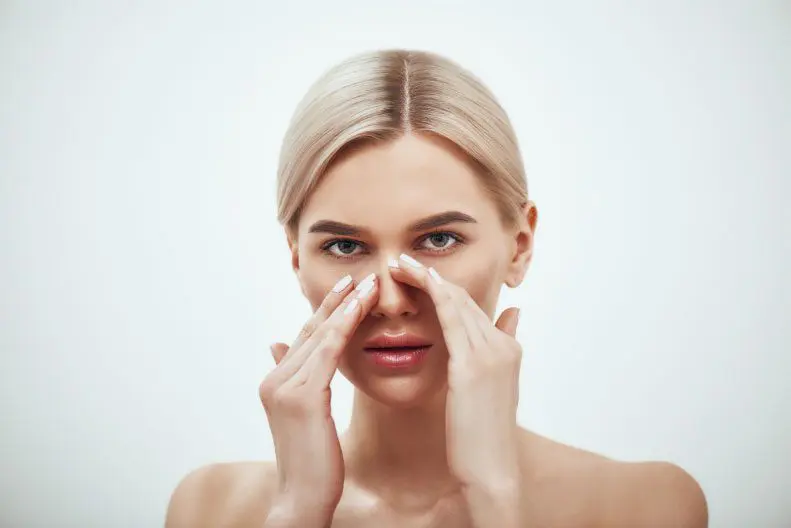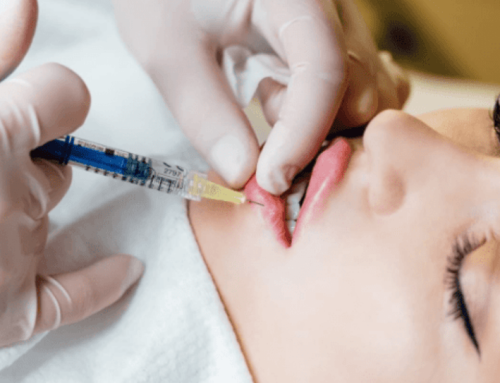Should You Get a Nose Job?
Rhinoplasty surgery, also called a nose job, is a procedure done to change the shape of the nose or to improve breathing. Reshaping the nose can help a patient achieve their desired appearance and improve the performance of the nose. You should have realistic expectations for the outcome of your procedure before considering a rhinoplasty.
Your nose must be fully developed, and you should be in good health in order to be a candidate for a rhinoplasty. It is best to wait until your face is fully grown with fully developed nasal bones before receiving nose surgery, therefore they are very rarely performed on minors.
Do You Have Difficulty Breathing?
Rhinoplasties can be done to fix a number of problems. A nose job can be performed to repair the nasal structure and help promote better airflow and breathing. If you struggle breathing through one or both nostrils, you may have a deviated septum, or a deformity of the nasal septum and are likely a perfect candidate for septoplasty, the plastic surgery to repair a deviated septum.
Septoplasties can also help alleviate any sleeping problems and difficulties with exercising that may be a result of a blocked airway in your nose. If you have suffered from a nasal injury during sports or physical activities, a nose job is a great option to reshape the nose and fix any breathing problems that may have arisen.
Don’t Like the Shape of Your Nose?
While a nose job is perfect for fixing a deviated septum, it can also be a great option for patients who are unhappy with the appearance of their nose. Your nose is comprised of both bone and cartilage.
During a rhinoplasty, changes can be made to the bone, cartilage, and skin to create a shape that is unique to you. Reshaping your nose could include removing a hump, straightening the bridge of the nose, changing the size of the nostrils, or making the nose overall bigger or smaller.
Keep in mind that there is no such thing as a perfect nose. Before you get a rhinoplasty, Dr. Thaxton will evaluate your nasal structure and discuss the realistic outcomes of your cosmetic surgery. Every rhinoplasty is uniquely done with the patient’s facial features and natural beauty in mind.
Opened or Closed Rhinoplasty?
Based on the reasonings for your surgery, you may receive an “open” or “closed” rhinoplasty. During your consultation, Dr. Thaxton will decide which approach would provide you with your desired outcome.
An “open” rhinoplasty is often performed on patients who require extensive reconstruction of the nose. A small incision will be made under the tip of the nose in between the nostrils. This approach gives your surgeon more access to your nasal structure and the ability to completely reshape the nose.
A “closed” rhinoplasty is used for patients who require only small adjustments to the nose. Incisions are made to the inside of the nostrils during this approach, and as a result, there is no visible scarring.
What is the Recovery Like?
Our patients always ask, how painful is a nose job? A rhinoplasty is a major surgery and like most surgeries, it does have a lengthy recovery process. If you are considering getting this procedure, plan your schedule accordingly for pre and post-surgery.
Rhinoplasty is an outpatient procedure, so there is no overnight stay in the hospital after a nose job, however, you will be put under some level of anesthesia for the procedure. In some cases, a surgeon will opt for general anesthesia, but in some cases, plastic surgeons opt for sedation and local anesthesia. Either way, you will need someone to drive you home after the procedure and stay with you for the first 24 hours after surgery.
After your surgery, you may be sent home with medication to control any pain or discomfort you may experience. It is normal to have some bruising and swelling around the eyes a couple of days post-op. This can be alleviated with cold compresses.
During surgery, splints are placed inside and outside the nose which you will wear for about a week before coming back to get them removed. After getting a nose job, it is important to avoid any strenuous activities for two to three weeks and to not wear glasses of any kind for four to five weeks.
Swelling is completely normal and expected after rhinoplasty. The final results of your surgery can take up to a year so remember to be patient and take care of your nose after your procedure. Your surgeon will give you more detailed instructions for your recovery after your operation.
Is It Covered by Insurance?
Rhinoplasties are typically not covered by insurance companies when they are done for cosmetic purposes. If you are receiving a septoplasty due to difficulty with breathing, a portion of your procedure may be covered by insurance.
Additionally, if you have sustained a nasal injury and it has affected your breathing, your insurance may cover your rhinoplasty. Not all rhinoplasties are the same so keep in mind that the more complex your surgery is, it could potentially cost you more financially.
If you decide that rhinoplasty surgery is right for you, give us a call at any time to discuss the options available to you or to schedule a consultation. In addition to nose job surgery, we offer a myriad of surgical services, including face lifts, tummy tucks, mommy makeover surgery, otoplasty and more, as well as non-invasive procedures such as Juvéderm® and Botox®.





